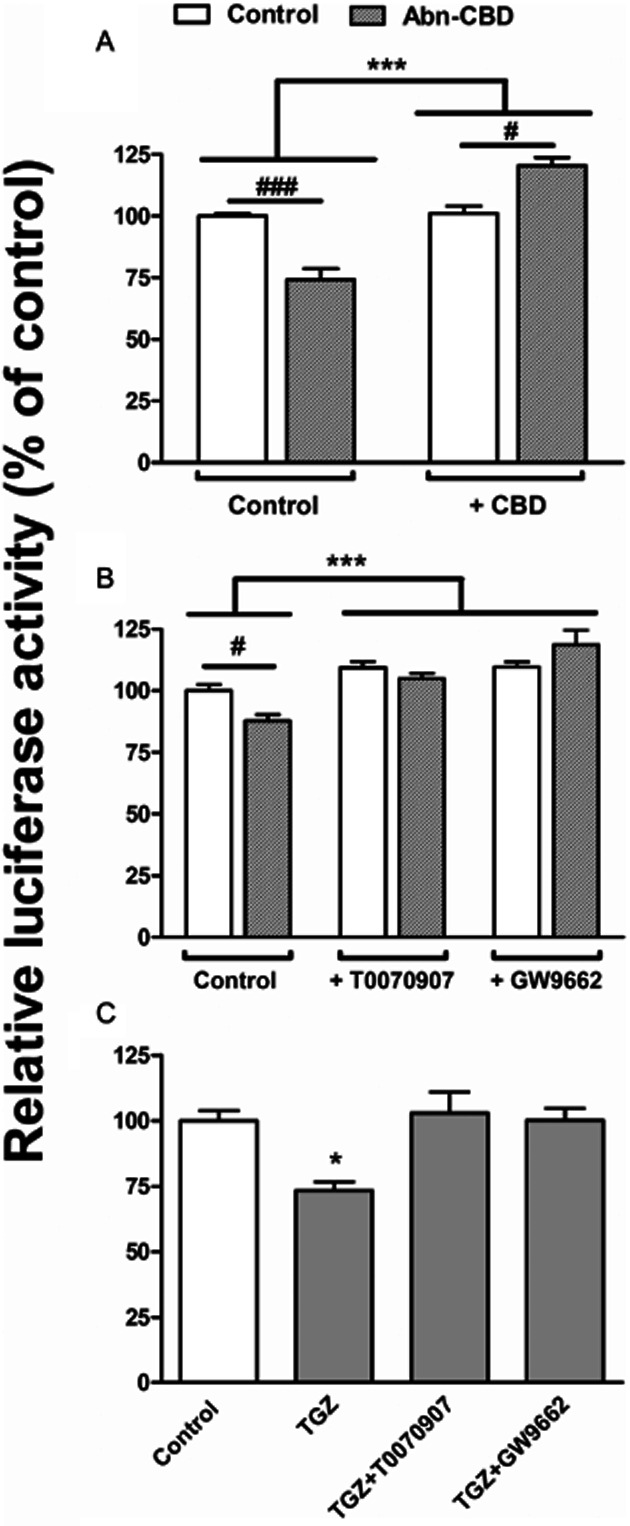Figure 6.

Regulation of TH promoter activity by direct activation of the non-CB1/non-CB2 cannabinoid receptors and PPARs. To confirm the involvement of the non-CB1/non-CB2 cannabinoid receptors in the URB597-mediated effect, the influence of Abn-CBD (10 μM, 5 h) was investigated on N1E115 cells transfected with pTH250-Luc. The involved signalling cascades were examined by concomitantly treating the cells either with non-CB1/non-CB2 cannabinoid receptors antagonists (CBD, 10 μM) (A) or PPAR antagonists (T 0070907 at 10 μM or GW 9662 at 20 μM) (B). (A) Two-way ANOVA indicated a general effect of CBD as antagonist (***P < 0.0001, f = 52.37, residual d.f. = 10) with a positive interaction (***P < 0.0001, f = 65.28). #P < 0.05 and ###P < 0.001, as indicated for treated cells and determined by Bonferroni post-test. (B) Two-way ANOVA indicated a general effect of PPAR antagonists (***P < 0.0001, f = 19.49, residual d.f. = 18) with a positive interaction (*P = 0.0193, f = 5.026). #P < 0.05 as indicated for treated cells and determined by Bonferroni post-test. (C) The involvement of PPARs in the regulation of TH expression was confirmed by examining the influence of troglitazone (TGZ, 20 μM, 5 h) alone and in the presence of the PPAR antagonists (T 0070907 at 10 μM or GW 9662 at 20 μM). One-way ANOVA indicated a global treatment effect (P = 0.0128, f = 6.949, residual d.f. = 8) with *P < 0.05 relative to control, given by Dunnett's post-test. All the results are given as the percentages of relative luciferase activity (firefly luciferase relative to Renilla luciferase) relative to control values. Data shown are means with SEM values of at least three experiments performed in triplicate.
